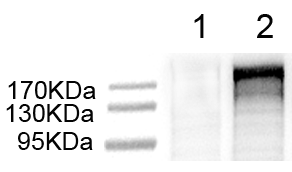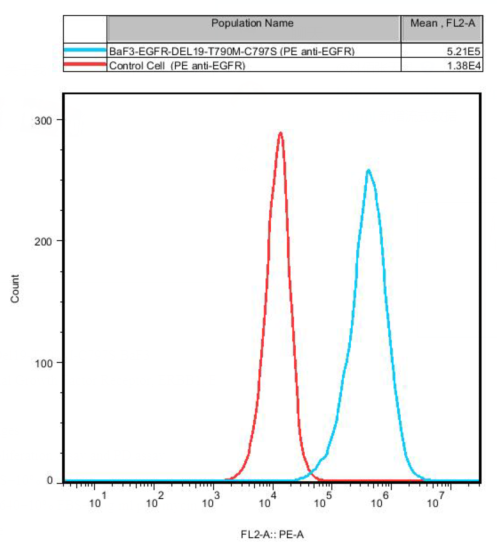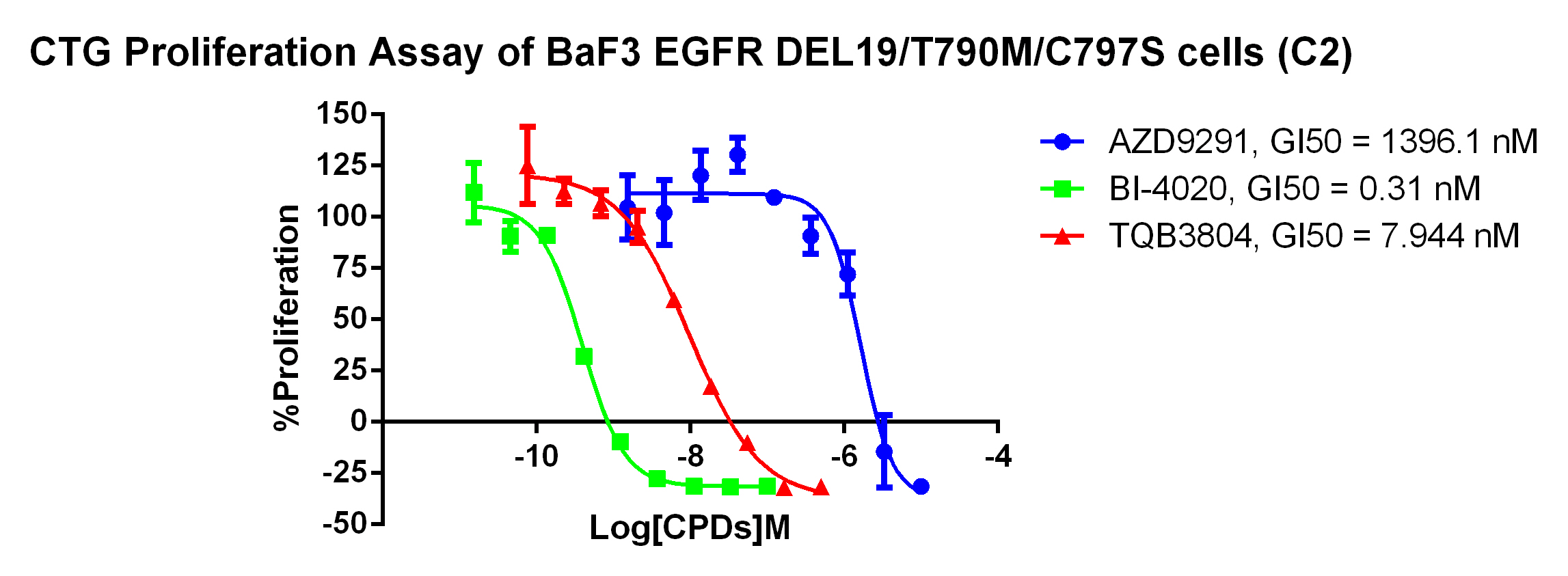南京科佰生物科技有限公司官方网站欢迎您的光临!
免费咨询热线: 4008-750-250
科研细胞
药靶细胞
标准品
NGS靶向捕获探针
EGFR Del19-T790M-C797S/BaF3
| CBP73173 | |
| I. Introduction | |
| Cell Line Name: | EGFR Del19-T790M-C797S/BaF3 |
| Host Cell: | Ba/F3 |
| Stability: | 16 passages (in-house test, that not means the cell line will be instable beyond the passages we tested.) |
| Application: | Anti-proliferation assay and PD assay |
| Freeze Medium: | 90% FBS+10% DMSO |
| Complete Culture Medium: | RPMI-1640+10%FBS |
| Mycoplasma Status: | Negative |
| II.Background | |
|
EGFR is widely recognized for its importance in cancer. Amplification and mutations have been shown to be driving events in many cancer types. Its role in non-small cell lung cancer, glioblastoma and basal-like breast cancers has spurred many research and drug development efforts. Tyrosine kinase inhibitors have shown efficacy in EGFR amplfied tumors, most notably gefitinib and erlotinib. Mutations in EGFR have been shown to confer resistance to these drugs, particularly the variant T790M, which has been functionally characterized as a resistance marker for both of these drugs. The later generation TKI's have seen some success in treating these resistant cases, and targeted sequencing of the EGFR locus has become a common practice in treatment of non-small cell lung cancer. Overproduction of ligands is another possible mechanism of activation of EGFR. ERBB ligands include EGF, TGF-a, AREG, EPG, BTC, HB-EGF, EPR and NRG1-4 (for detailed information please refer to the respective ligand section). In ligand-activated cancers, Cetuximab appears to be more effective than tyrosine-kinase inhibitors. |
|
| III. Representative Data | |
|
1. WB of EGFR Del19/T790M/C797S expression |
|
|
Figure 1. WB of EGFR Expression |
|
|
2.Sanger sequencing
|
|
|
3. Anti-proliferation assay |
|
|
Figure 5. CTG Proliferation Assay of BaF3 EGFR DEL19/T790M/C797S cells (C2). |
|

扫一扫,关注我们公众号
Copyright ©2021 www.cobioer.com All Rights Reserved. 南京科佰生物科技有限公司版权所有 苏ICP备13038923号









